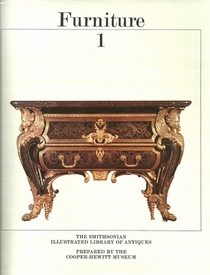Search -
Furniture 1: Prehistoric Through Rococo
Furniture 1 Prehistoric Through Rococo
Author:
The history of furniture begins in prehistoric times, when our ancestors used found objects to create the basic necessities for seating and sleeping purposes. Later they sought materials that could be readily worked into an abundant variety of furniture forms and decorative motifs. Furniture 1 traces the exciting evolution o... more »
Author:
The history of furniture begins in prehistoric times, when our ancestors used found objects to create the basic necessities for seating and sleeping purposes. Later they sought materials that could be readily worked into an abundant variety of furniture forms and decorative motifs. Furniture 1 traces the exciting evolution o... more »
ISBN-13: 9780910503235
ISBN-10: 0910503230
Publication Date: 1979
Pages: 128
Edition: 1st
Rating: ?
ISBN-10: 0910503230
Publication Date: 1979
Pages: 128
Edition: 1st
Rating: ?
0 stars, based on 0 rating
Publisher: Smithsonian Institution
Book Type: Hardcover
Members Wishing: 1
Reviews: Amazon | Write a Review
Book Type: Hardcover
Members Wishing: 1
Reviews: Amazon | Write a Review
Genres:




